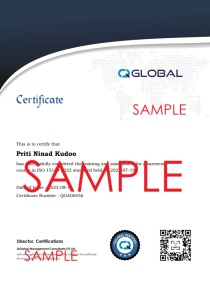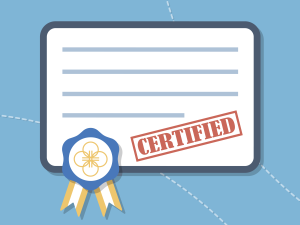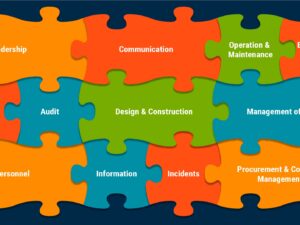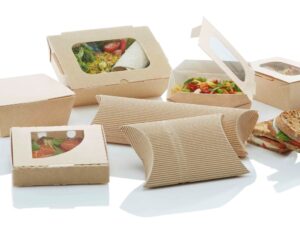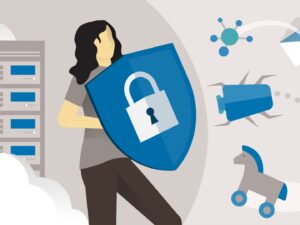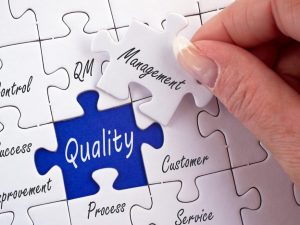BRC Standard for Packaging Material Issue 6 - Lead Auditor Course
- Description
- Curriculum

Packaging is a fundamental part of any brand. It defines product integrity, security and drives innovation. The BRC Global Standard for Packaging and Packaging Materials is the first packaging standard in the world to be recognised by the Global Food Safety Initiative (GSFI) benchmarking committee. BRC Global Standard for Packaging and Packaging Materials can be used by any manufacturer producing packaging materials for all types of products – from food to consumer products – at all levels: primary, secondary and tertiary.
BRC lead auditor training course will help you learn how to initiate an audit, prepare and conduct audit activities, compile and distribute audit reports and complete follow-up activities. On successful completion of this course, you will be able to optimize your auditing skills with the internationally recognized BRC food safety standard for packaging materials and boost your audit capabilities. Also gain confidence in planning and performing an effective audit, as well as reporting and taking corrective action where necessary.
BRC lead auditor course develops the necessary skills to assess and report on the conformance and implementation of processes based on BRC food safety standard for packaging materials.
Who Should Attend?
- Anyone involved in the planning, implementing, maintaining, supervising or auditing of an BRC food safety management system
- Existing internal auditors
- Employees of any organisation who wish to audit their organisation’s food safety management system
- Trainers, managers or consultants seeking to master an food safety management system audit process
- Personnel who wish to pursue career as an BRC management system auditor
- Expert advisors in food safety management system
Key Benefits
- Develop the career as an BRC food safety management system lead auditor
- Gain the skills to plan, conduct, report and follow up first, second and third party audits in accordance with ISO 19011
- Learn skills to lead an audit team
- Identify the aims and benefits of a BRC food safety audit
- Interpret BRC food safety requirements for audit application
- Grasp the application of risk-based thinking, leadership and process management
- Acknowledge the correlation between BRC and other standards and regulatory frameworks
- Learn the latest BRC lead auditor techniques
- Consolidate your expertise with the latest developments and contribute to the continuous improvement of the business
Learning & Evaluation Method
This is a live and interactive course.
Once you purchase the course, our team will contact you to plan the training. No matter where you are located, we schedule the classes based on your convenience and time zone. You can plan to attend the training in sessions of 4 or 8 hr duration, based on how much time you can spend in a day.
Certification
There are increasing numbers of organizations, who prefer candidates those who have certain certifications from recognized programs. Certification demonstrates your commitment to superior professionalism, upholding industry standards, and continued learning. These merits can help boost your professional credibility and prestige within your own network, in your organisation, with your current clients, and when pursuing new business opportunities.
After the successful completion of the course and final exam, you will be awarded with a certificate of completion issued by QGlobal.
Your credentials will be made available in the global online directory and can be verified by anyone searching with the certificate number. Without doubt we can say that our training courses are well recognized and sought after by organizations across various geographies.
Buy for group
Are you planning to buy this course for a group? We have the best prices for you!
Select ‘Buy for Group’ option and add to the cart. You will get a discount of 60 – 75% for a group of up to 10 participants.
To make a group purchase, create your group name and add individual emails of up to 10 participants. Each participant will get the access to the course materials, exam and the certificate. We will arrange one live-online session for the entire group.
Total: 206 Courses View all
-
1Introduction to standards and certification
- Purpose of standardization
- Benefits of certification
-
2Introduction to BRC PACKAGING standards
-
3BRC PACKAGING Senior Management Commitment
- Senior management commitment and continual improvement
- Management review
-
4BRC PACKAGING Hazard and risk management
- Hazard and risk management team
- Hazard analysis and risk assessment
-
5BRC PACKAGING Product safety and quality management
- Product safety and quality management system
- Document control
- Record-keeping
- Specifications
- Internal audit
- Corrective and preventive action
- Supplier approval and performance monitoring
- Product authenticity, claims and chain of custody
- Management of subcontracted activities and outsourced processes
- Management of suppliers of services
- Traceability
- Complaint handling
- Management of product withdrawals, incidents and product recalls
-
6BRC PACKAGING Site standards
- External standards
- Building fabric and interiors: raw materials handling, preparation, processing, packing and storage areas
- Utilities
- Site security and product defence
- Layout, product flow and segregation
- Equipment
- Maintenance
- Housekeeping and cleaning
- Product contamination control
- Glass, brittle plastics, ceramics and similar materials control
- Sharps and metal control
- Chemical and biological control
- Waste and waste disposal
- Pest management
-
7BRC PACKAGING Product and process control
- Graphic design and artwork control
- Product development
- Packaging print control
- Process control
- Calibration and control of measuring and monitoring devices
- Product inspection, testing and measuring
- Control of non-conforming product
- Incoming goods
- Storage of all materials and intermediate and finished products
- Dispatch and transport
-
8BRC PACKAGING Personnel
- Training and competence: raw materials handling, preparation, processing, packing and storage areas
- Personal hygiene: raw materials handling, preparation, processing, packing and storage areas
- Staff facilities
- Medical screening
- Protective clothing
-
9BRC PACKAGING Requirements for traded products
- Approval and performance monitoring of manufacturers/packers of traded packaging products
- Specifications
- Product inspection and laboratory testing
- Product legality
- Traceability
-
10LI 01 Building the team
-
11LI 02 Conducting gap analysis
-
12LI 03 Preparing implementation plan
-
13LI 04 Creating awareness
-
14LI 05 Training
-
15LI 06 Procuring documents
-
16LI 07 Creating management system manual
-
17LI 08 Creating policies and procedures
-
18LI 09 Creating forms and templates
-
19LI 10 Planning for certification
-
20LI 11 Implementation methodology
- Building the culture
- Plan-Do-Check-Act
-
21LI 12 Role of leadership in implementing the management system
- Leadership concepts
- Role of leaders in implementing the management system
- 12 Characteristics of team leaders and managers
-
22LI 13 Employee motivation and involvement
- Employee wants
- Achieving a motivated workforce
-
23LI 14 Obstacles in implementing the management system
- Inability to manage the change
- No planned review of the system
- Inadequate planning
- Not aligning the goals and matrices
- Poor commitment from top management
- Differences between departments and individuals
- Lack of awareness and not providing continuous training
- Poor documentation
- Inadequate monitoring, measuring and analysis of data and results
- Not paying attention to internal and external customers
- Failure to continually improve
- Failure to motivate and empower employees
-
24Introduction to ISO 19011 2018 Guidelines for auditing management systems
- Scope
- Normative references
- Terms and definitions
-
25Conducting BRC packaging audit
-
26ISO 19011 Principles of auditing
-
27ISO 19011 Managing an audit program
- Establishing audit programme objectives
- Determining and evaluating audit programme risks and opportunities
- Establishing the audit programme
- Roles and responsibilities of the individual(s) managing the audit programme
- Competence of individual(s) managing audit programme
- Establishing extent of audit programme
- Determining audit programme resources
- Implementing audit programme
- Defining the objectives, scope and criteria for an individual audit
- Selecting and determining audit methods
- Selecting audit team members
- Assigning responsibility for an individual audit to the audit team leader
- Managing audit programme results
- Managing and maintaining audit programme records
- Monitoring audit programme
- Reviewing and improving audit programme
-
28ISO 19011 Conducting an audit
- Initiating audit
- Establishing contact with auditee
- Determining feasibility of audit
- Preparing audit activities
- Performing review of documented information
- Audit planning
- Assigning work to audit team
- Preparing documented information for audit
- Conducting audit activities
- Assigning roles and responsibilities of guides and observers
- Conducting opening meeting
- Communicating during audit
- Audit information availability and access
- Reviewing documented information while conducting audit
- Collecting and verifying information
- Generating audit findings
- Determining audit conclusions
- Conducting closing meeting
- Preparing and distributing audit report
- Preparing audit report
- Distributing audit report
- Completing audit
- Conducting audit follow-up
-
29ISO 19011 Competence and evaluation of auditors
- Determining auditor competence
- Personal behavior
- Knowledge and skills
- Achieving auditor competence
- Achieving audit team leader competence
- Establishing auditor evaluation criteria
- Selecting appropriate auditor evaluation method
- Conducting auditor evaluation
- Maintaining and improving auditor competence

